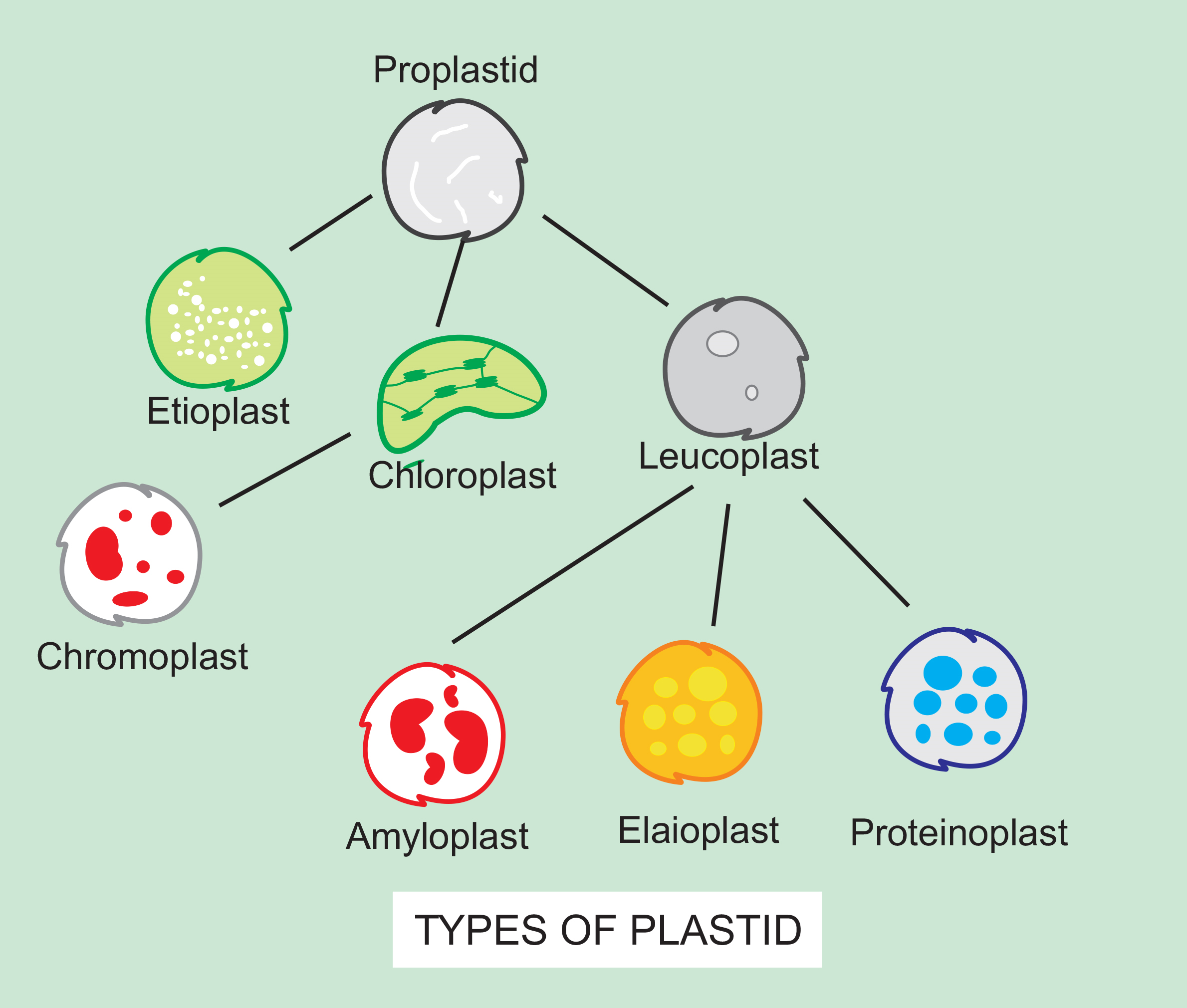
The largest cell organelles in the cell are?
(a)Plastids
(b)Golgi bodies
(c)Mitochondria
(d)Chromosomes
Answer
445k+ views
Hint: Cell organelles are membrane-bound organelles present within all eukaryotic cells. They differ in shape, size, colour and function.
Complete answer:
In a Plant cell, Plastids are the largest cell organelle. Chloroplasts (Green plastids) are plant cell organelles which take part in photosynthesis and temporary or permanent storage of starch. In green alga, chloroplasts are of various shapes and sizes but chloroplasts of higher plants are disc-shaped with a diameter of 4 to 6 micrometre and thickness of 2 to 4 micrometre. In embryophytes, they are the second-largest cell organelle, smaller only to the nucleus. Chromosomes are not distinct cell organelles.
Both the Golgi apparatus and mitochondria are much smaller than chloroplasts.
Additional Information: The plastid is a double-membrane proteinaceous cell organelle that contains their own DNA. found in the cells of plants, algae, and some other eukaryotic organisms. Plastids were discovered and named by Ernst Haeckel, but A. F. W. Schimper was the first to provide a clear definition. Plastids are the site of manufacture and storage of important chemical compounds used by the cells of autotrophic eukaryotes. They often contain pigments used in photosynthesis, and the types of pigments in a plastid determine the cell's colour. They have a common evolutionary origin and possess a double-stranded DNA molecule that is circular, like that of prokaryotic cells.
Plastids are of 3 types - Chromoplast, Chloroplast and leucoplasts.
Chloroplast - These are green photosynthetic pigments (chlorophyll) containing plastids. These are responsible for
Chromoplast- These impart colour to the flowers. It contains non-green pigments.
Leucoplast – This lacks any kind of pigments and is mainly involved in storage.
Note: The largest cell organelle, in general, is considered to be the nucleus. Though in plant cells, the vacuole takes up about 80-90% of the volume, thus being the largest cell organelle in a plant cell.

Complete answer:
In a Plant cell, Plastids are the largest cell organelle. Chloroplasts (Green plastids) are plant cell organelles which take part in photosynthesis and temporary or permanent storage of starch. In green alga, chloroplasts are of various shapes and sizes but chloroplasts of higher plants are disc-shaped with a diameter of 4 to 6 micrometre and thickness of 2 to 4 micrometre. In embryophytes, they are the second-largest cell organelle, smaller only to the nucleus. Chromosomes are not distinct cell organelles.
Both the Golgi apparatus and mitochondria are much smaller than chloroplasts.
Additional Information: The plastid is a double-membrane proteinaceous cell organelle that contains their own DNA. found in the cells of plants, algae, and some other eukaryotic organisms. Plastids were discovered and named by Ernst Haeckel, but A. F. W. Schimper was the first to provide a clear definition. Plastids are the site of manufacture and storage of important chemical compounds used by the cells of autotrophic eukaryotes. They often contain pigments used in photosynthesis, and the types of pigments in a plastid determine the cell's colour. They have a common evolutionary origin and possess a double-stranded DNA molecule that is circular, like that of prokaryotic cells.
Plastids are of 3 types - Chromoplast, Chloroplast and leucoplasts.
Chloroplast - These are green photosynthetic pigments (chlorophyll) containing plastids. These are responsible for
Chromoplast- These impart colour to the flowers. It contains non-green pigments.
Leucoplast – This lacks any kind of pigments and is mainly involved in storage.
Note: The largest cell organelle, in general, is considered to be the nucleus. Though in plant cells, the vacuole takes up about 80-90% of the volume, thus being the largest cell organelle in a plant cell.

Recently Updated Pages
Master Class 11 Economics: Engaging Questions & Answers for Success

Master Class 11 Business Studies: Engaging Questions & Answers for Success

Master Class 11 Accountancy: Engaging Questions & Answers for Success

Master Class 11 English: Engaging Questions & Answers for Success

Master Class 11 Computer Science: Engaging Questions & Answers for Success

Master Class 11 Maths: Engaging Questions & Answers for Success

Trending doubts
Which one is a true fish A Jellyfish B Starfish C Dogfish class 11 biology CBSE

State and prove Bernoullis theorem class 11 physics CBSE

1 ton equals to A 100 kg B 1000 kg C 10 kg D 10000 class 11 physics CBSE

In which part of the body the blood is purified oxygenation class 11 biology CBSE

One Metric ton is equal to kg A 10000 B 1000 C 100 class 11 physics CBSE

Difference Between Prokaryotic Cells and Eukaryotic Cells




